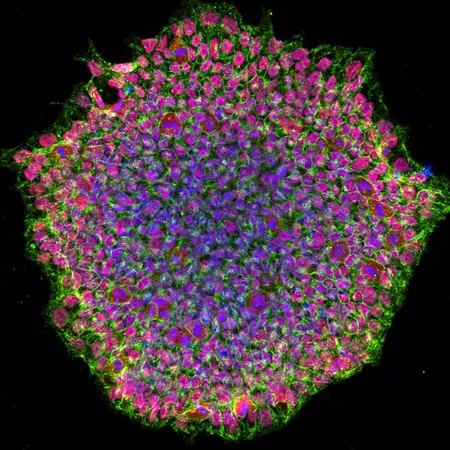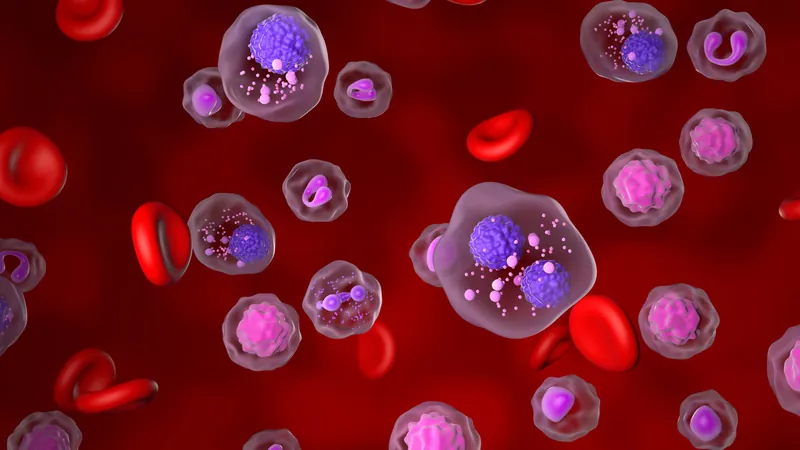
Miraculous Breakthrough: Paralyzed Man Stands Again Thanks to Revolutionary iPS Cell Therapy!
2025-03-31
Author: Ming
Introduction
In an astounding leap for the field of regenerative medicine, a paralyzed man has regained the ability to stand following groundbreaking treatments involving induced pluripotent stem (iPS) cells. This remarkable development springs from the pioneering work of researchers at Keio University in Japan, led by esteemed stem cell scientist Dr. Hideyuki Okano.
The Innovative Approach of iPS Cells
Dr. Okano’s innovative approach employs reprogrammed cells that have the potential to morph into any cell type in the body, including neural cells crucial for spinal function. The process involves taking mature skin or blood cells and reverting them to a versatile stem cell-like state. From there, these iPS cells can develop into vital components of the nervous system.
The Clinical Trial
In a recent clinical trial, four adult male patients with severe spinal cord injuries were selected to receive iPS cell therapy. Just four weeks post-injury, the researchers injected two million neural precursor cells into each participant's damaged spinal cord. These graduates of the iPS technique were designed to develop into neurons and supportive glial cells, essential for restoring communication between the brain and the body.
Results of the Trial
The participants initially presented with a complete lack of motor and sensory functions, classified as grade A on the American Spinal Injury Association (ASIA) Impairment Scale. Yet, in a stunning turn of events, one of the patients has progressed to grade D, now able to stand independently. While two patients experienced no improvement, another participant achieved movement in limb muscles, advancing to grade C.
Expert Caution
Despite these remarkable advancements, experts caution that further extensive trials are necessary to validate these promising results. The potential for natural recovery in patients could blur the lines of the treatment’s effectiveness, highlighting the need for caution. However, the notion of recovery through regenerative techniques such as iPS therapy beckons hope for countless individuals grappling with disabilities from spinal cord injuries.
Broader Implications
The implications of this research extend far beyond individual cases. If subsequent trials continue to demonstrate positive results, iPS cell therapy could revolutionize the way we approach spinal cord injuries and neurological disorders, offering a renewed lease on life for those once thought to be without options.
Conclusion
As this groundbreaking therapy unfolds, the scientific community and patients alike are left wondering: what is next on the horizon for regenerative medicine? And how many more lives could this innovative treatment touch in the future? The story is just beginning, and as researchers delve deeper, the promise of recovery might pave the way for unforeseen breakthroughs in spinal health. Stay tuned as we follow this monumental journey!


 Brasil (PT)
Brasil (PT)
 Canada (EN)
Canada (EN)
 Chile (ES)
Chile (ES)
 Česko (CS)
Česko (CS)
 대한민국 (KO)
대한민국 (KO)
 España (ES)
España (ES)
 France (FR)
France (FR)
 Hong Kong (EN)
Hong Kong (EN)
 Italia (IT)
Italia (IT)
 日本 (JA)
日本 (JA)
 Magyarország (HU)
Magyarország (HU)
 Norge (NO)
Norge (NO)
 Polska (PL)
Polska (PL)
 Schweiz (DE)
Schweiz (DE)
 Singapore (EN)
Singapore (EN)
 Sverige (SV)
Sverige (SV)
 Suomi (FI)
Suomi (FI)
 Türkiye (TR)
Türkiye (TR)
 الإمارات العربية المتحدة (AR)
الإمارات العربية المتحدة (AR)